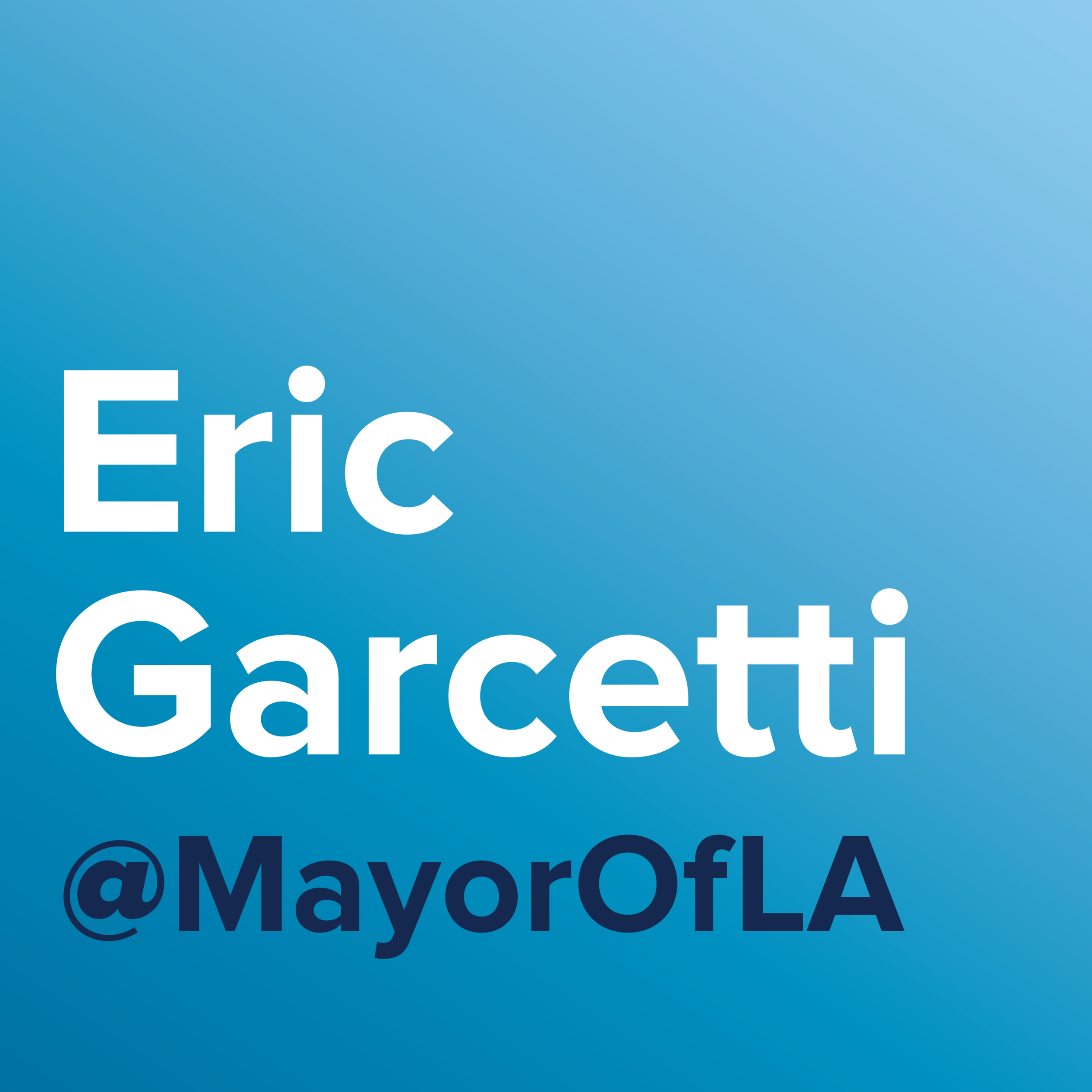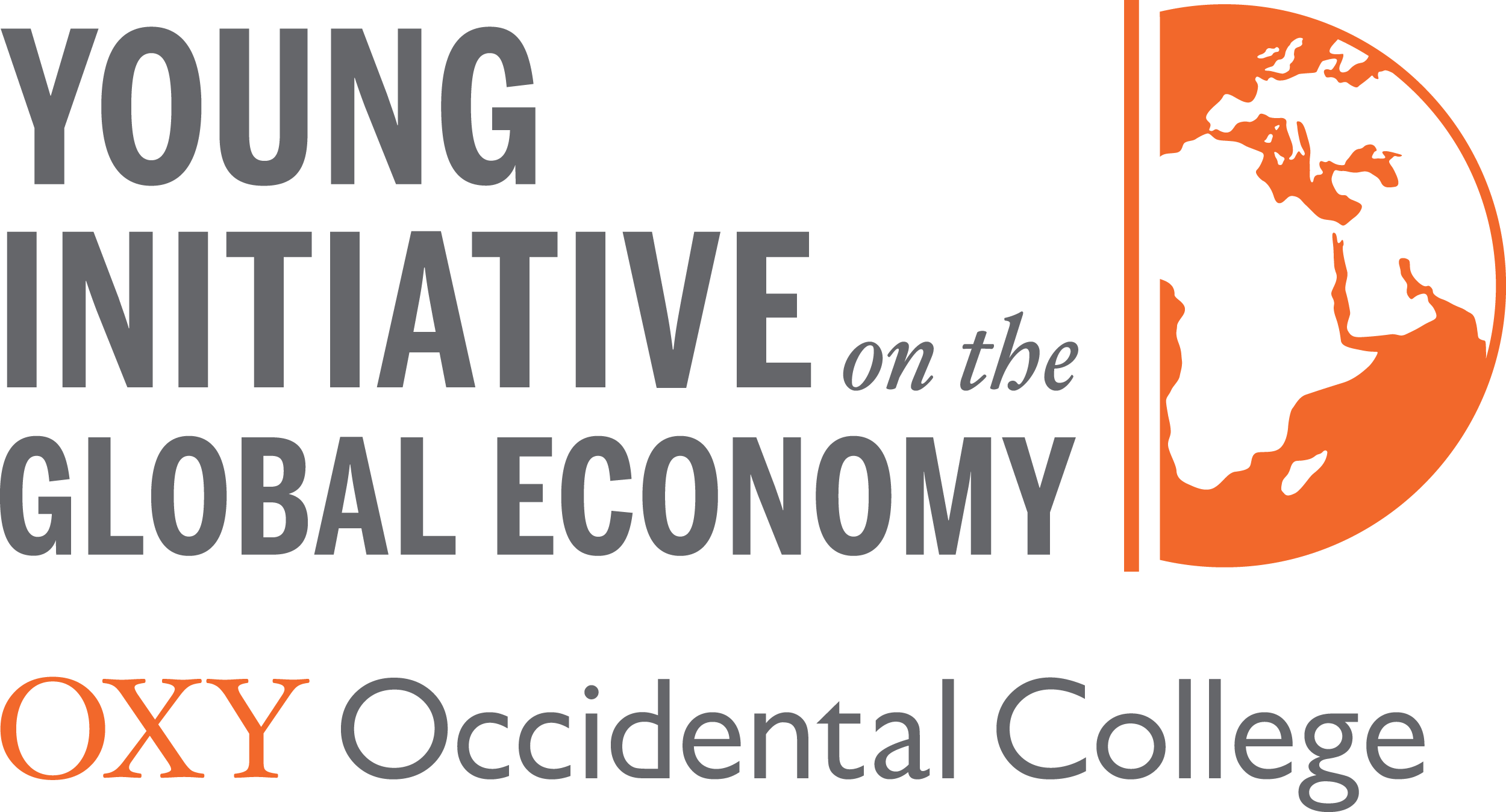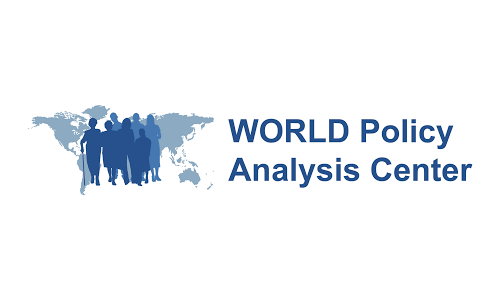Revising National SDG Targets for the City of Los Angeles
The Mayor’s Office of the City of Los Angeles, in partnership with local universities and with the support of the Conrad N. Hilton Foundation, developed a methodology to map city activities and data relevant to the SDG framework that can be used to align priorities and perspectives with global aspirations. This project was part of the LDA-SI 2018-2019 microgrant program.
Written by Erin Bromaghim as the Conrad N. Hilton Foundation Fellow on the SDGs, Office of Los Angeles Mayor Eric Garcetti, with Dawn Comer. This report would not be possible without the support of Ilir Lita and the Mayor’s Fund for Los Angeles and Dr. Sanjeev Khagram, who brought both Occidental College and the Thunderbird School at Arizona State University forward to partner with the City. A special thanks to the students of Occidental, ASU, UCLA, and USC who dedicated their time to this work. Editing by Sandra Ruckstuhl, Jessica Espey, and Jay Neuner. Design by Micha Dugan, Ryan Swaney, and Jay Neuner.
Table of contents
Abstract | Problem | Solution | Building Process | Strengths and Weaknesses | References | Annexes
Abstract
“Los Angeles can, should, and will lead in building the healthier and more prosperous world that we dream of for our children and grandchildren.”
In October 2017, Mayor Eric Garcetti committed to adopt and implement the Sustainable Development Goals (SDGs) in the City of Los Angeles. With support from the Conrad N. Hilton Foundation, the Mayor’s Office partnered with four local universities to begin a comprehensive mapping of relevant activities and data to the SDG framework, including the 169 targets and 240-plus indicators. As the university students working in support of Los Angeles began to align activity, plans, policies, and data to the Goals, they found that some of the targets were not applicable for city government; UN member states drafted and adopted a framework relevant for national monitoring and reporting.
The students then devised a methodology to assess the application of the 169 targets in the City of Los Angeles, proposing revisions while preserving the intent. In addition, for some of the Goals, the students added new targets to reflect priorities for the City of Los Angeles. This briefing outlines their process and its results: the sum of student-recommended targets for consideration by the Mayor’s Office as they organize the City’s reporting on the SDGs. Other cities or subnational governments can use this methodology to localize the SDG framework, align their priorities and perspectives with the global aspirations, and thus assess progress toward the Goals.
Problem
Los Angeles is a global city, with more than four million residents drawn from all corners of the world. Los Angeles is also home to the busiest port complex in the Western Hemisphere and, in 2018, welcomed more than 50 million visitors through the fourth busiest airport in the world. But Los Angeles also struggles with homelessness, traffic, and other urban trials amplified by concentrations of people and commerce. These challenges are not isolated to Los Angeles, so the City has sought to partner with other cities, both international and domestic, to share solutions and learn from one another. Los Angeles has adopted Agenda 2030, the UN resolution containing the 17 Sustainable Development Goals (SDGs) and 169 subordinate targets, as means by which the City can measure its progress, evaluate collective impact across sectors and geography, and engage in a common language of development.
To support implementation of the SDGs, the Mayor’s Office quickly established partnerships with local universities, including the John Parke Young Initiative at Occidental College, the Thunderbird School of Global Management at Arizona State University (ASU), the World Policy Analysis Center at the University of California at Los Angeles (UCLA), and the Institute on Inequalities in Global Health at the University of Southern California (USC). During the summer of 2018, the City brought eighteen students from the four universities together at ASU’s Los Angeles campus to map current activity across the public, private, and nonprofit sectors to the SDG framework.
To begin their work, the students inventoried SDG-relevant “activities,” defined as any plans, policies, initiatives, measures of impact, services, or business areas that related back to the targets. During this process, students ran into questions as to whether the targets were relevant to the City. This discussion quickly expanded to whether or not the City intended to track targets for which it did not have primary jurisdiction. The students quickly identified seams in governance between the City of Los Angeles and the County of Los Angeles (comprising 88 cities including L.A. and responsible for, among other things, public health) and the Los Angeles Unified School District (independent of both County and City and responsible for K-12 education). The SDG targets also reference international governance to which the City is not directly a party and does not have the resources or authority. For example, the City of Los Angeles does not have the authority to implement preferential trade status, as this is the provenance of the federal government in the United States. Neither can the City of Los Angeles directly support foreign aid. As such, the students identified the need to determine if the City could implement the 169 SDG targets as written.
SOLUTION
The objective of this effort was to create a methodology for determining the applicability of a target for the City of Los Angeles, and to propose revisions or additions to the framework that reflect local context. This methodology is a first step that may be used by other sub-national entities to localize the SDGs for their community, while staying true to the intent of the target as adopted.
This methodology consists of a process by which to evaluate the targets for applicability; a rubric created by the students to score each target; and finally, a framework of revised targets as proposed by the students. A critical component of this methodology includes coordination by the Mayor’s Office to validate the proposed revised targets. Once the revised targets are validated by the Mayor’s Office, the framework will become the basis for the City’s work to identify appropriate indicators and data sources by which to evaluate and share its progress on the Goals. The proposed student framework with revised target language is provided in Annex A.
Building Process
The methodology has five steps:
Sort, or group applicable and inapplicable targets
“The Golden Rule,” or assess necessary revision based on the original intent
Revise or replace, or alter the target language as appropriate
Develop new targets to align with local context
Validate mapped proposed targets to existing City commitments by coordinating revisions with policy owners
Sort
In their first pass, students categorized all 169 targets using a binary lens of “applicable” or “not applicable.” This first step helped to segregate 69 targets (41 percent) that were applicable from the language written and adopted by the United Nations to the City of Los Angeles. As described above, many process-oriented targets seek to leverage support for developing countries from developed countries, either directly (through foreign aid and assistance) or indirectly (through favorable treatment within international conventions or global structures governing finance, trade, and investment). Others make reference to shared commitments through other international frameworks or compacts. For these targets, the students had to consider whether the limiting factor was legal–i.e., whether the City lacked the means or authorities to pursue the target–or structural–i.e., the City may not be a member state or party to the framework, but could adopt or implement. A good example of the former is Target 10.a, pertaining to favorable trade status per the World Trade Organization; the City of Los Angeles has no authority to implement this, as mentioned above. An example of the latter is Target 11.b, which reads, “By 2020, substantially increase the number of cities and human settlements adopting and implementing integrated policies and plans towards inclusion, resource efficiency, mitigation and adaptation to climate change, resilience to disasters, and develop and implement, in line with the Sendai Framework for Disaster Risk Reduction 2015-2030, holistic disaster risk management at all levels.” In this case, Los Angeles has partnered with the UN Office for Disaster Risk Reduction and is an active member of the Rockefeller Foundation’s 100 Resilient Cities initiative, publishing the “Resilient Los Angeles” strategy in March 2018. With this alignment in policy, Target 11.b is applicable and the City’s activities are well aligned, though the City is neither a member state nor directly party to the agreement.
The Golden Rule
The second step revisited the list of 100 targets that were deemed “not applicable” and considered whether the target language could be revised in order to make the target apply for the City. Most of the targets deemed “not applicable” received this designation because of the legal/structural reasons cited above, or because the defining measure or population was not appropriate for the City of Los Angeles. As an example of the former, the very first target under SDG 1 (End Poverty)–Target 1.1–reads, “By 2030, eradicate extreme poverty for all people everywhere, currently measured as people living on less than US$1.25 a day.”
Globally and locally, US$1.25 per day is certainly a marker of extreme poverty. But as a developed economy, US$1.25 a day would set too low a bar for the City of L.A. and actually leave out many people who struggle with the affordability of basic costs, like housing. Revising the measure can give us a better marker for those in our community who are facing extreme poverty or approaching that marker. Adjusting the measure of US$1.25 per day to another planning factor will better define a target for the City that honors the intent to make real progress on eradicating extreme poverty without artificially minimizing the problem. Thus, revising this target to a marker reflective of extreme poverty in Los Angeles will make it both applicable and worthwhile for the City and, depending on the data source, demonstrate how extreme poverty manifests along specific geographic or demographic subgroups, allowing for a more focused response.
Other targets deemed “not applicable” in the first step may require language reframing the target to reflect specific values in Los Angeles. One such value is to ensure belonging and representation for all genders. References to binary gender appears throughout target language in the framework. Under SDG 4 (Quality Education), Target 4.1 reads, “By 2030, ensure that all girls and boys complete free, equitable and quality primary and secondary education leading to relevant and effective learning outcomes.” Particularly in places around the world where girls are denied access to equitable, quality education, explicitly denoting these two genders may be a way of emphasizing inclusivity. However, the target can be revised to read, “By 2030, ensure that all children complete free, equitable and quality primary and secondary education leading to relevant and effective learning outcomes,” because not all children may identify as a binary gender. We believe this change is in line with the Goal as written, to ensure equitable and inclusive quality education for all. It also better reflects how Los Angeles will choose to approach this target and other targets with language that does not impose binary limitations on gender. The output of this second step was to use the Golden Rule to identify which “not applicable” targets could be revised, keep the intent of the original, and isolate the specific language that rendered it so.
Revision and Replacement
Focusing on the isolated language, the students began the third step: considering whether the structural issue, defined measure, or population could be revised to make the target “applicable.” It is worth noting that the students, with direction from the City, endeavored to include or adapt as many targets as possible in order to maintain the City’s commitment to implement the framework holistically.
For those “not applicable” targets that could not be revised with a swap in language, the team proposed replacement language. The students referred to this as the “Mischief Rule,” meaning that the purpose of the original target could be supported, but only with new language applicable for the context and authority of the City. Only five targets met this standard. A good example is Target 17.11, which reads, “Significantly increase the exports of developing countries, in particular with a view to doubling the least developed countries’ share of global exports by 2020.”
The City of Los Angeles can embrace the spirit of this target by supporting international trade between local businesses and those in developing countries rather than traditional commerce controls reserved for national governments. The students proposed replacement language that reads, “Support developing countries by seeking to increase trade between businesses in Los Angeles and developing countries.”
Another example of a replacement target is 8.10, which reads, “Strengthen the capacity of domestic financial institutions to encourage and expand access to banking, insurance and financial services for all.” While the City has few mechanisms to strengthen the capacity of domestic financial institutions, encouraging expanded access to financial services (particularly for those who have been structurally isolated or disenfranchised) is a priority. The City can also consider non-traditional financial mechanisms as part of this effort, and the proposed replacement reads, “Encourage the expansion and greater access for all to banking, insurance and traditional and emerging financial services.” This language includes opportunities for greater access that may result from new technology (such as blockchain) or evolutions of service provision (such as the sharing economy).
Classification and Gap Analysis
In the fourth step, the students proposed the whole revised framework, scoring each of the targets based on a rubric reflecting the degree to which the target was modified. This meant a score of 0 represented a target not applicable for the City; 1, a target with no revision; 2, a target with revision based on an adjustment of terms; 3, a replacement target; and 4, a new target. This scoring helped us to quantify how many of the targets were revised from the original framework as adopted by the UN member states and by how much those targets were changed. This step included looking for opportunities across the framework where new targets may be appropriate to capture sustainable development priorities; this could be done both by an individual city or sub-national government and as a collective. This can also be done at the indicator level, selecting data measures that demonstrate more specific or local progress or impact.
For example, SDG 5–Gender Equality–is a priority for the City of Los Angeles. In this step, the students proposed only two revisions to the targets within this Goals. First, Target 5.6 was revised from “Ensure universal access to sexual and reproductive health and reproductive rights as agreed in accordance with the Programme of Action of the International Conference on Population and Development and the Beijing Platform for Action and the outcome documents of their review conferences” to “Ensure universal access to sexual and reproductive health and reproductive rights.” Second, students proposed a new target within SDG 5 (Gender Equity) to address LGBTQIA+ rights, on which the SDG framework as adopted is unacceptably silent. That target, 5.x, reads, “End discrimination against LGBTQIA+ persons and ensure that LGBTQIA+ persons have equal access to services and employment opportunities.”
The rubric created by the students is captured in Table 1. That revised framework, as proposed, is provided in Annex A of this brief. Of the 169 targets and including revision or replacement, all but 13 are included for a total of 156 (+1, the proposed 5.x) targets. 69 are applicable without any revision.
Table 1. Rubric for Degree of Target Modification
| Legend | Description |
|---|---|
| 0 | NOT APPLICABLE (This SDG target does not apply at the local level.) |
| 1 | LITERAL (The SDG target as written applies to the City of Los Angeles.) |
| 2 | TARGET REVISED (The SDG target as written does not apply, but can be revised to apply to the City of Los Angeles.) |
| 3 | TARGET REVISED (The SDG target as written does not apply, but can be revised to apply to the City of Los Angeles.) |
| 4 | TARGET ADDED (A new target should be added for the City of Los Angeles.) |
That revised framework, as proposed, is provided in Annex A of this brief. Of the 169 targets and including revision or replacement, all but 13 are included for a total of 156 (+1, the proposed 5.x) targets. 69 are applicable without any revision.
Validation
The fifth and final step, and by far the most time consuming, is for the Mayor’s Office to coordinate and validate these proposed revisions with relevant policy leads throughout the City; at the time of publication, this is in progress. Many revisions, particularly those where a policy lead is clearly defined and that are seeking to expand a population identified by the target language, will be easy. Others, like those that require a particular numeric measure, will require consultation with multiple leads. This process is ongoing in the City, and the Mayor’s Office will determine which of the revised targets recommended by the students will become a part of the overall framework by which the City of Los Angeles will measure progress toward the Goals. This will depend on a more discreet mapping of these revised targets to commitments already in place through approved plans, policies, initiatives, and Executive Directives.
Selecting the best measure may also yield multiple options based on prospective indicators and data sources that can support measuring progress on that target. A revised framework for the City of Los Angeles, when fully adopted, may have multiple targets that each reflect different quantitative measures. Again using Targets 1.1 and 1.2 as examples, measuring extreme poverty and the proportion of all people living in poverty depends on an appropriate definition for those terms in the City of Los Angeles. With respect to the US$1.25 per day marker, the students looked at several different measures, including the national poverty line (US$12,490 annually, or US$34 per day); the 2018 minimum wage of US$12.00 per hour (US$24,960 annually, or nearly US$68 per day); or a cost-of-living-based figure, such as the United Way of California’s annual “Real Cost Measure” report (US$26,270 annually, or US$72 per day). There is work yet to be done to finalize our framework in Los Angeles, and that work will require consultation and engagement with stakeholders from across the City and the community. Simultaneously, we will gather the data to support these different indicators and also examine what those sources can teach us about how best to accelerate progress on these overall Goals.
Strengths and Weaknesses
While part of a larger effort to capture the data and activities related to the SDGs within Los Angeles, not to mention identify potential new initiatives for partnerships and progress, the experience of “localizing” the SDG framework at the target level has been worthwhile and has also raised several considerations for the City. Descriptions of three strengths and two weaknesses follow.
More context equals greater alignment. The SDGs are far from the only Goals or targets that have been adopted by the City of Los Angeles. Our Sustainable City pLAn was first published in 2014, setting aggressive markers for progress against dozens of environmental, economic, and equity targets over 20 years. In most cases, these targets are more granular than the targets within the SDG framework and inherently more local. A strength of the proposed revised SDG targets is that it allows for better alignment to these existing plans, and likewise highlights where they diverge. The alignment helps to identify and group indicators already in place for the City, and also provides a means of communicating local efforts through the international framework of the SDGs. The Sustainable City pLAn will be updated and released in 2019, offering a chance for the SDG framework to add value in that process.
Don’t claim early victory. In some of the revised targets, particularly those with a quantifiable measure, the students have proposed a more aggressive marker than adopted by the UN member states. This is a strength in that, rather than claiming victory on a given target, looking at the data from a disaggregated perspective may tell a different story. A great example is Target 3.1, which seeks to reduce maternal mortality to fewer than 70 per 100,000 live births. In 2016, the state of California reported fewer than 7.3 maternal deaths per 100,000, an order of magnitude less than the global goal. However, statistics also show that, despite the low rate of maternal mortality, African American mothers (regardless of educational attainment or socioeconomic status) die at three to four times the average rate. So in seeking to revise the target, data shows that Los Angeles could pursue a reduction in that mortality rate, but ensure equitable reductions as well. In selecting that revised number, using the global benchmarks likewise provides a guide. If the current rate of maternal mortality is 216 per 100,000 live births, achieving 70 would represent a reduction of more than 67 percent. Applying a similar reduction to the revised target language, based on the current 7.3 in California, would be just under 5 per 100,000 and include the language “for every race and ethnic group.” This localization therefore focuses the target to a measure with ambition and meaning for the community of Los Angeles. There are also seams in jurisdiction and ownership that impact this particular target. For example, the County of Los Angeles oversees public health resources, including hospitals. So reflecting on current commitments or policy initiatives on this target, the appropriate policy owner is not the City of Los Angeles, but another public sector entity.
Lead by example to leave no one behind. Another strength of the proposed revisions to the framework is that they make an important statement about equity and inclusion in support of all sexual orientations, gender identities and expressions, and sex characteristics. Revising language from “girls and boys” to “all children,” or from “men and women” to “all people” is a small change that embraces the motto of the SDGs–to “leave no one behind.” In the community of Los Angeles, this revised language better reflects key values of welcome and belonging. Moreover, the revised language may incentivize other communities, corporations, and organizations to likewise adjust their targets, and allow for collaboration on how best to find or develop indicators and mobilize strategies to accelerate progress on both the target and overall equity.
Localization may be isolating. Revisions to the targets that add context for Los Angeles may broaden the appeal to the community of local stakeholders, but may decrease the ability for other cities to share in those revisions or indicators. This can impact the ability for Los Angeles to benchmark itself against other cities or to share in specific findings that may be unique based on the revised language. For this reason, Los Angeles may find maintaining consistent indicators, as defined by a standard like the World Council on City Data’s ISO 37120, are useful despite changes at the target level.
Multiple targets could mean a lot of noise. Alternatively, Los Angeles may find that localizing the framework leads to multiple target measures and indicators, effectively creating fractals of values for each revised target. This could enrich a discussion around how to use these indicators to inform policy choices, but it could also create unnecessary noise and dilute progress measures if the goal posts are in always in motion. Purely from a capacity standpoint, sourcing and maintaining multiple measures within a single target may also be superfluous and distract from efforts to mobilize progress on the target itself. This also creates complexity by effectively creating multiple “dialects” within the common language of the SDG framework.
Efforts to implement the SDGs in Los Angeles have put the City in conversation with global partners, all committed to a common language and shared purpose. In some cases, this common language extends to the indicators and data sources we use to evaluate progress. In others, achieving and measuring meaningful progress necessitates adjusting a target to reflect the context of a city like Los Angeles. Finding the balance–of how best to communicate and implement a target framework relevant for all communities in Los Angeles, while demonstrating a contribution to the collective impact of the Goals–will depend on engagement both within the City and with stakeholders locally and globally.
References
Airports Council International. 2017. “Monthly Traffic Data.” https://aci.aero/data-centre/monthly-traffic-data/passenger-summary/year-2017/monthly.
California Department of Public Health. 2017. “The California Pregnancy-Associated Mortality Review.” Sacramento. https://www.cdph.ca.gov/Programs/CFH/DMCAH/CDPH%20Document%20Library/PAMR/CA-PAMR-Report-1.pdf.
California Maternal Quality Care Collaborative. n.d. “CA-PAMR (Maternal Mortality Review).” https://www.cmqcc.org/research/ca-pamr-maternal-mortality-review.
City of Los Angeles. n.d. “pLAn.” http://plan.lamayor.org.
City of Los Angeles. 2018. Resilient Los Angeles. Los Angeles. https://www.lamayor.org/sites/g/files/wph446/f/page/file/Resilient%20Los%20Angeles.pdf.
Los Angeles Tourism & Convention Board. 2019. “Los Angeles Celebrates Record Milestone of 50 Million Visitors in 2018.” January, 16, 2019. https://www.marketwatch.com/press-release/los-angeles-celebrates-record-milestone-of-50-million-visitors-in-2018-2019-01-16.
Minimum-Wage.org. n.d. “Los Angeles, California Local Minimum Wage for 2018, 2019.” https://www.minimum-wage.org/california/los-angeles-minimum-wage.
Port of Los Angeles. n.d. “Facts and Figures.” https://www.portoflosangeles.org/business/statistics/facts-and-figures.
U.S. Census Bureau. “Los Angeles city, California.” QuickFacts. https://www.census.gov/quickfacts/fact/table/losangelescitycalifornia,losangelescountycalifornia,ca/PST045218.
U.S. Department of Health & Human Services. “Poverty Guidelines.” Office of the Assistant Secretary for Planning and Evaluation. January 11, 2019. https://aspe.hhs.gov/poverty-guidelines.
United Way Greater Los Angeles. “Struggling to Stay Afloat: The Real Cost Measure in California 2018.” unitedwayla.org. June 7, 2018. https://www.unitedwayla.org/en/news-resources/blog/real-cost-measure-2018.













